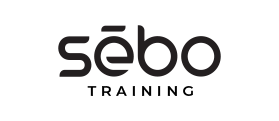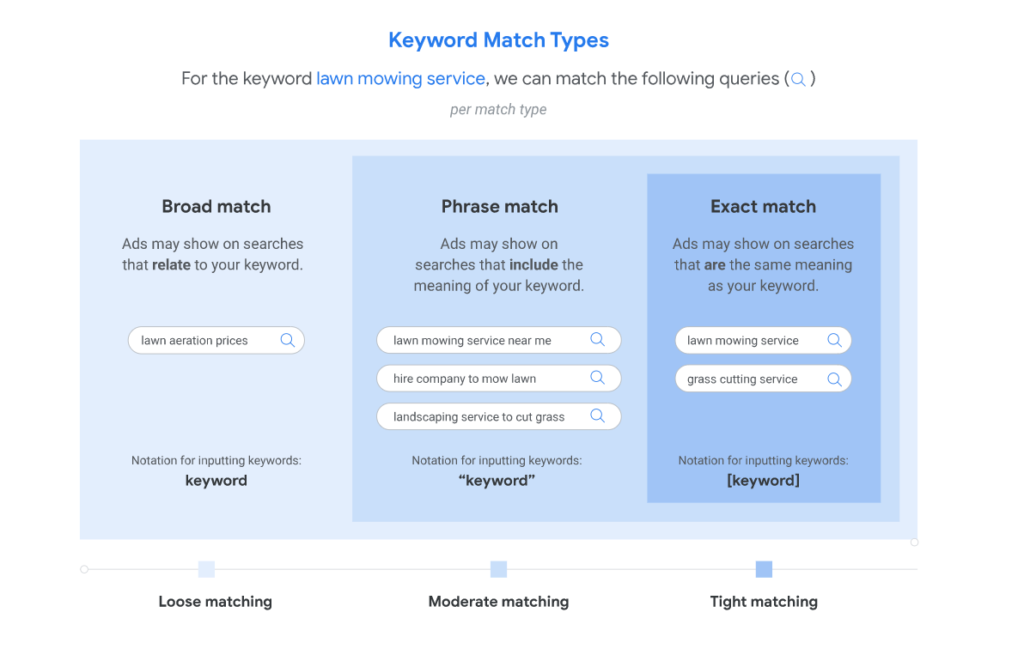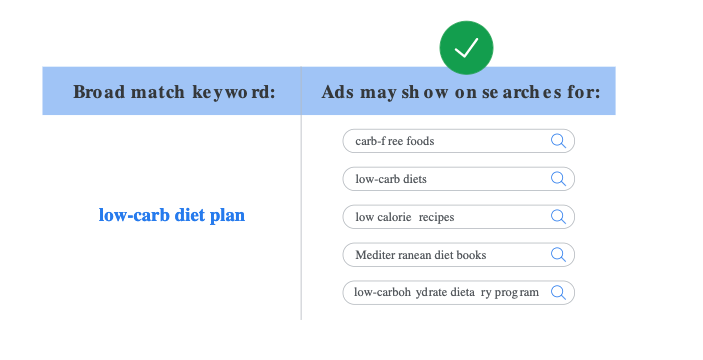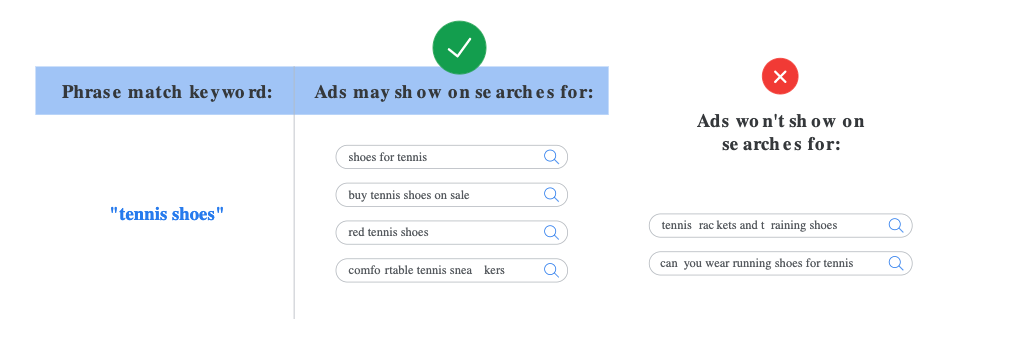Effective Keyword Research & Structuring
Keywords connect the right audience to your ads by aligning with user intent. As digital marketers, our role is to match client services with relevant search queries using tools like Keyword Planner.
Ad Group Structuring
Maintain a consistent keyword theme within each ad group. For example, if the theme is “running shoes,” ensure all keywords align. If an ad group has 40+ related keywords, consider splitting it into more specific groups like “marathon running shoes” and “track and field running shoes.” Always tailor ad groups to the client’s offerings—avoid keywords for products they don’t sell.
Keyword-Level Settings
At the keyword level, you can adjust Max CPC (for manual bidding or Maximize Clicks) and match type. Google Ads offers five match types: negative, exact, phrase, modified broad, and broad. Understanding these options is key to optimizing campaign performance. Learn more from Google about Keyword Match Types.





